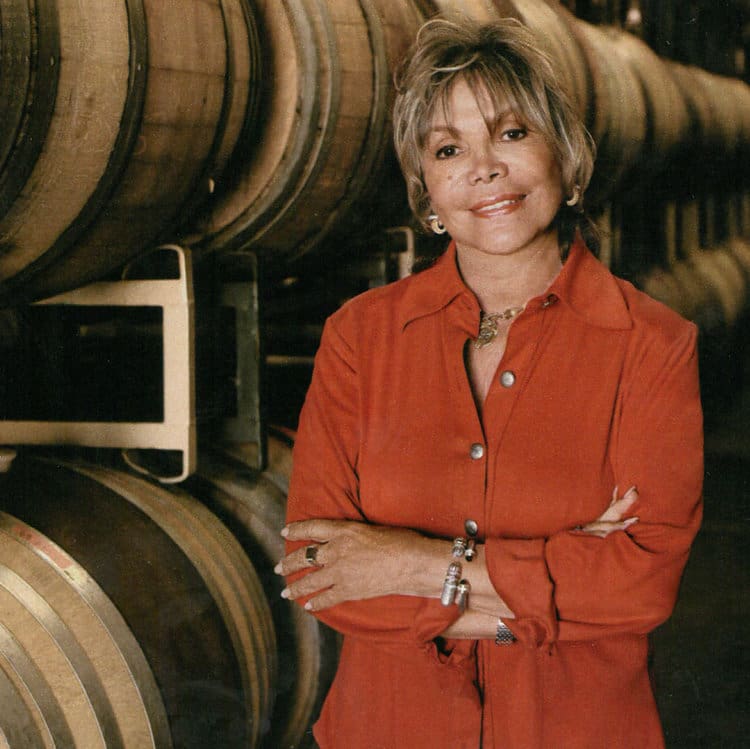—Barbara Barrielle
Tom Collins, head of the smoke research efforts at Washington State University, spoke to the industry on January 20 about his latest progress in his multi-year research on the effects of smoke on grapes and wine made from grapes exposed to smoke.
Stressing that these results are preliminary and final conclusions are awaiting publication in a series of scientific journals, Dr. Collins presented a glimpse of the research undertaken at the Washington Advancements in Viticulture and Enology (WAVE) labs beginning in 2016, which were greatly expanded in 2019. These experiments focused on the effectiveness of barrier sprays and the sensor network being created throughout the geographical wine regions of Washington state.

Dr. Collins, along with his small team, created controlled smoke exposures on Merlot grapes in the university’s research vineyard every two weeks during the growing season. The initial experiment created kaolin and bentonite clay barrier sprays, which were applied to grapes the night before smoke exposure. A control sector of grapes saw no barrier spray.
“The study in 2018 was inconclusive; concentration of smoke compounds in whole berry extracts did not differ significantly from treatment,” said Collins after measuring levels of guaiacol found in the resulting wine made in bucket fermentations. Guaiacol and 4-methylguaiacol are present in wood smoke and have been found to be the resulting compounds left on grapes after smoke exposure. They are suspected of causing smoke “taint” or flavors.
The following growing season, the same spray application before smoke exposure was repeated but, upon picking, the grapes were frozen, the barrier sprays chemically wiped off and grape skins peeled off the flesh. This time, guaiacol levels dropped on grapes sprayed with the kaolin; even more so on grapes sprayed with the bentonite barrier. 4-methyl guaiacol was also reduced.

Washington State Professor Tom Collins gives update on smoke taint research
In the subsequent years, barriers were applied with backpack sprayers and then rinsed with water using the same method and the reduced levels of guaiacol were even more pronounced. These hopeful results will now be expanded upon by both altering the timing of barrier sprays removal are removed and trialing potentially more effective commercial rinsing techniques.
“Now we look at how long kaolin or bentonite sprays last and whether you apply early in the growing season or periodically throughout,” says Collins. “How long after smoke exposure can you wait to rinse; a week or up to two or three weeks? And, ideally, how much do you need to apply?”
A smoke sensor program for data gathering is ramping up but was limited in 2021 because of supply chain issues. Dr. Collins and his team hope to have sensors located throughout the winegrowing regions of Washington, at varying elevations, to observe the effects of smoke laying lower in vineyards versus at altitude.
Ongoing smoke research is also being conducted at UC Davis and University of Oregon in a collaborative effort. The USDA recently awarded a significant grant to be shared among the research programs, and the resulting discoveries are expected to be of interest to many industries and government sectors in the battle against wildfire damage.
Dr. Collins will be at the Unified Wine and Grape Symposium in Sacramento this week to present his team’s findings to date.
_______________________________________________________________________

Barbara Barrielle was a longtime publicist in sports and wine before going to the other side as a wine, travel and entertainment writer. She also produces films and has a documentary “Crushed: Climate Change and the Wine Country Fires” releasing in 2021. Current publications Barbara writes for are AARP Magazine, Northwest Travel & Life, East Hampton Star, Napa Valley Register, Oregon Wine Press as well as Wine Industry Advisor. She lives in Healdsburg, travels extensively and studies wine and languages.
Instagram: @
Facebook: facebook.com/barbara-barrielle





